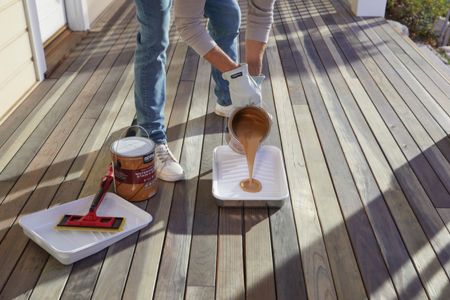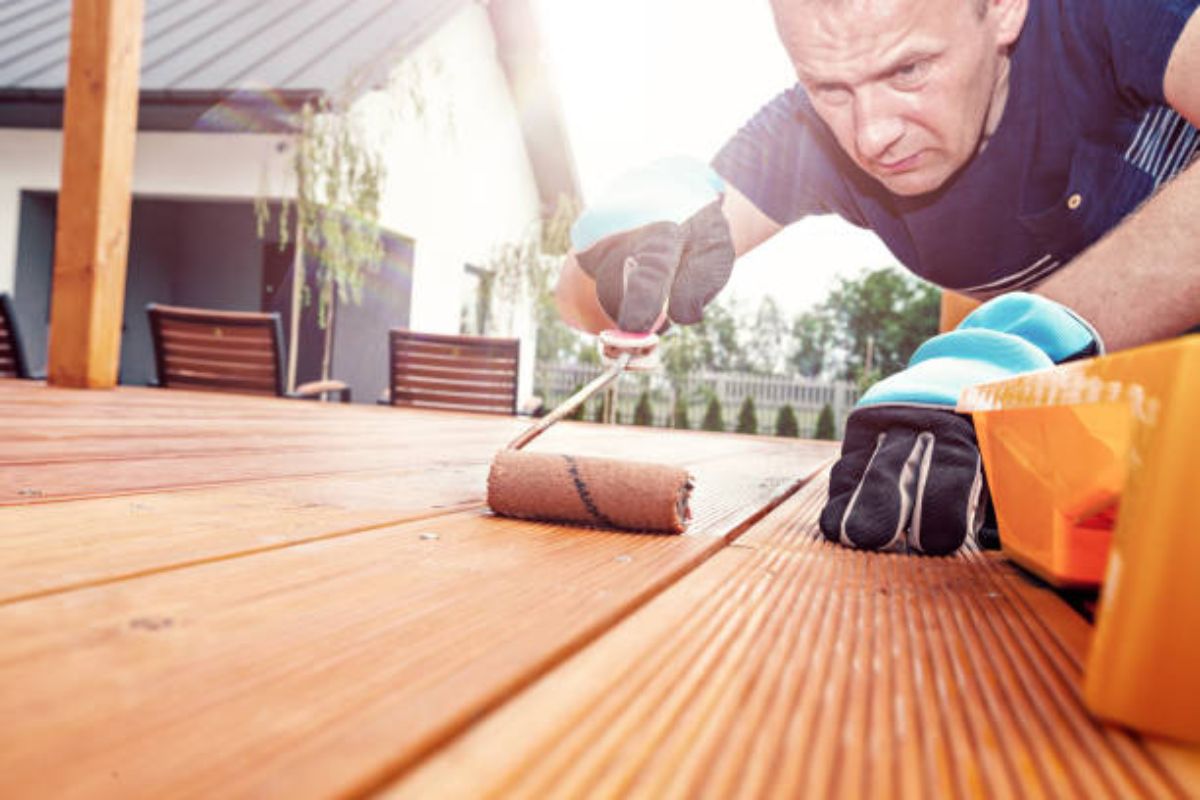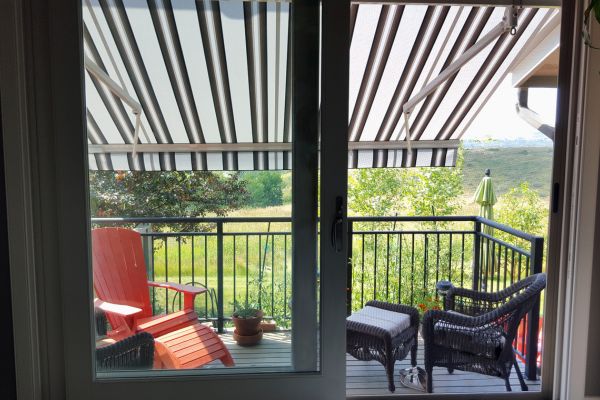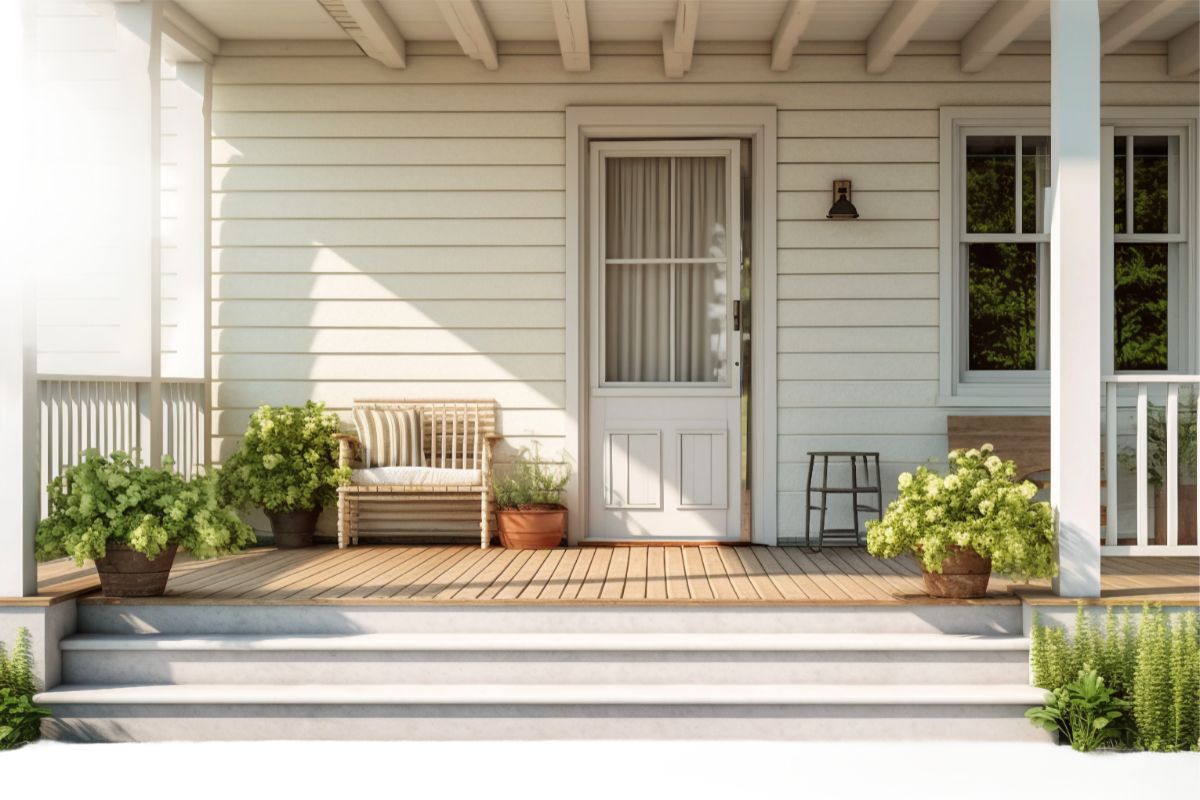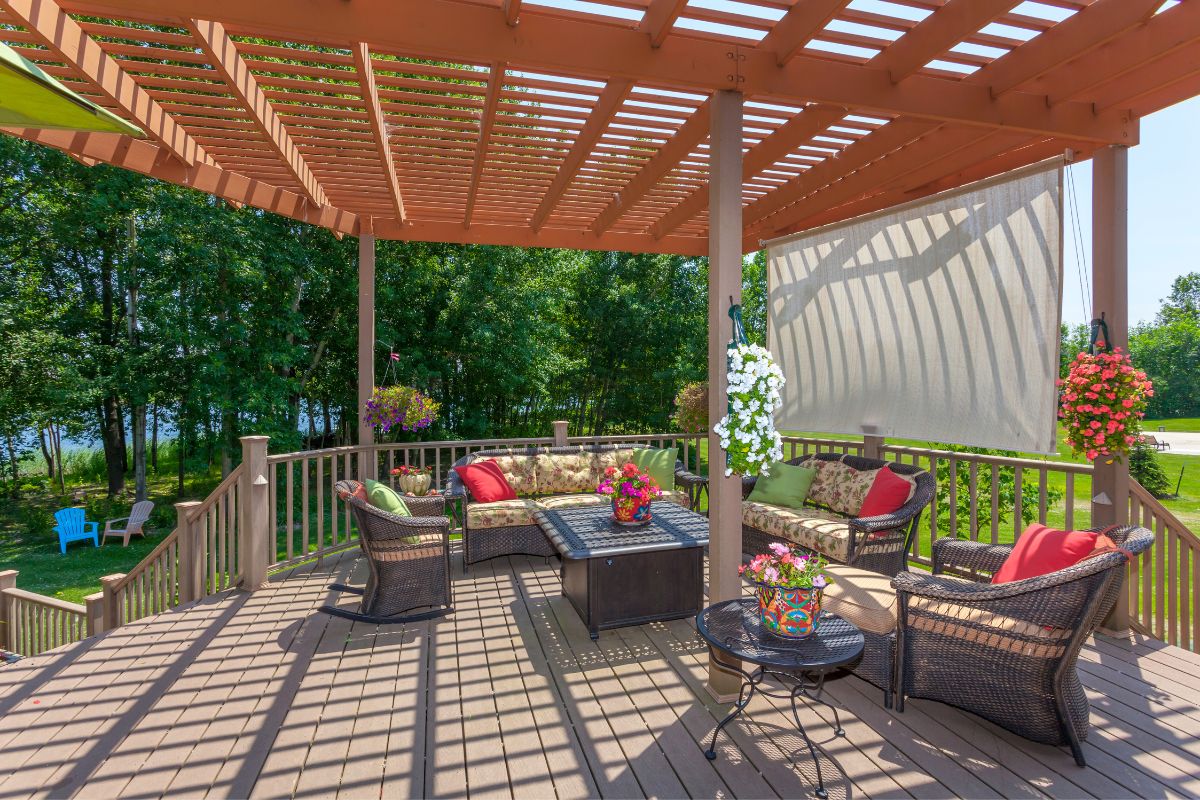Adding corner steps on your deck is not just about access, it’s a design move that elevates the look and function of your outdoor space. Whether you are building a new deck or updating an existing one, corner steps bring a seamless, stylish flow that traditional straight steps cannot match. They open multiple entry points and make moving around your deck easier, especially for families and guests.
This guide will explain everything you need to know to design corner steps that suit your deck’s layout and lifestyle. From materials to safety tips, we will cover critical considerations that help you get the most out of this upgrade.
Whether you are DIY-ing or hiring a contractor, the right plan will ensure your corner steps are practical and beautiful additions to your home. Stay with us, and let us explore how corner steps can transform your deck into a more inviting, functional space.
Designing Corner Steps for Your Deck
Corner steps are more than just functional, they can enhance the beauty and usability of your outdoor space. A well-thought-out design ensures your deck looks balanced and easily accessible from different angles. Key factors to focus on include proper placement, sizing, materials, and style. When these elements align, your corner steps will blend seamlessly with the deck, offering both convenience and visual appeal.
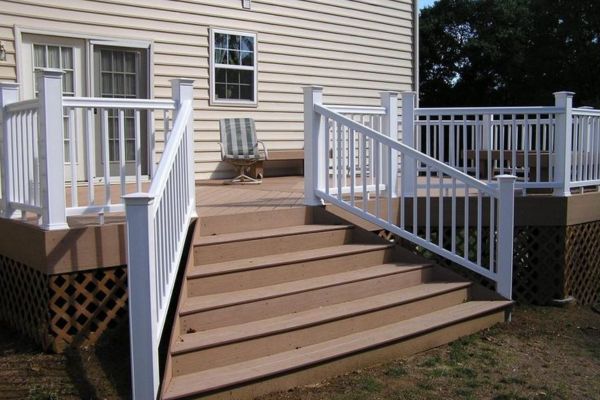
Importance of Proper Placement and Sizing
Getting the placement and size right is crucial to ensure safety and accessibility. Corner steps should lead naturally to high-traffic areas, like patios, gardens, or paths, to improve the deck’s flow. Too narrow or poorly positioned steps can feel awkward, while oversized steps may take up unnecessary space.
As a rule, steps should be at least 36 inches wide for comfortable movement, and each step should follow the standard rise-and-run measurements (typically 7 inches high and 11 inches deep) for consistency. Proper planning helps avoid tripping hazards and ensures that the steps integrate seamlessly with the deck’s design and installation.
Choosing the Right Style and Materials
The style and material of your corner steps should complement the overall look of your deck. Use the same material as your deck boards, whether natural wood, composite, or PVC, for a cohesive design. Wooden steps offer a warm, traditional feel but require regular maintenance, while composite materials are low-maintenance and durable. Style choices include straight-edged, curved, or cascading steps, each giving a different vibe to your deck.
Additionally, consider adding railings or lighting to enhance both safety and aesthetics, especially if your deck is elevated. The right combination of materials and style ensures the steps are functional while enhancing your deck’s charm.
Innovative Corner Step Ideas
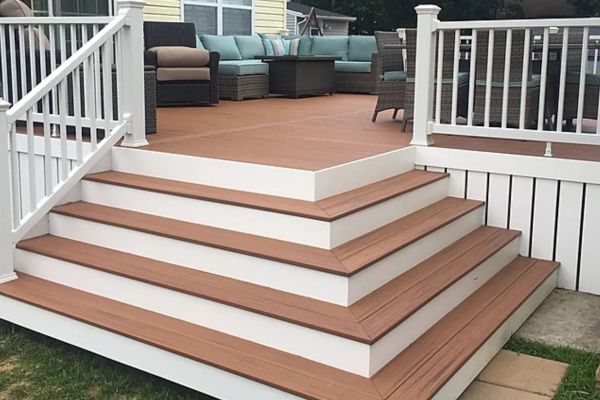
When it comes to designing corner steps on deck, thinking outside the box can elevate your deck’s aesthetics and functionality. Traditional steps are effective, but innovative designs bring unique styles and practical benefits. Whether you maximize space, improve accessibility, or create a sleek modern look, the right corner step idea can make all the difference. Below are some creative options to inspire your design.
Wraparound Steps for Enhanced Accessibility
Wraparound steps create a smooth transition between your deck and the surrounding area. Spanning two or more sides of the deck, they offer multiple entry points, making the space more accessible for guests and family. These wide, low-profile steps are also perfect for homes with children or elderly family members, providing easy, gradual access. Beyond functionality, wraparound steps lend a welcoming, open feel to your deck and work especially well with large, elevated decks that need extra access points.
Floating Stairs for a Modern Look
Floating stairs offer a sleek, minimalist design that enhances the visual appeal of modern decks. These stairs appear suspended, thanks to hidden supports or cantilevered structures, giving them a light, airy feel. While floating stairs work best with contemporary decks made from composite or metal, they can be customized to fit any style. Adding LED lighting along the edges enhances the modern vibe and improves nighttime visibility. If you want to make a design statement, floating stairs are an excellent way to achieve that bold, cutting-edge look.
Spiral Staircases to Save Space
Spiral staircases are ideal for decks with limited space, as they provide vertical access without taking up much room. These stairs wind around a central post, creating a compact footprint that makes them perfect for smaller yards or multi-level decks. Spiral staircases can suit various deck styles in materials like metal, wood, or composite. They also add an architectural focal point to your outdoor space. While they may not be suitable for heavy traffic, spiral staircases are an innovative, space-saving solution that adds both charm and function.
Practical Tips for Building Corner Steps
Building corner steps on deck requires thoughtful planning and precise execution to ensure they look great, function well, and last for years. Each stage, from measuring and cutting to choosing suitable materials and incorporating safety features, plays a crucial role in creating attractive and practical steps. Follow these tips to ensure your corner steps come together seamlessly.

Measuring and Cutting for Precise Fit
Accurate measurements ensure your corner steps fit perfectly into the deck’s layout. Start by measuring the rise and run of each step to match building code requirements, ensuring consistency across all steps. Use a framing square and a carpenter’s pencil to mark precise cut lines, and double-check measurements before making any cuts. Uneven cuts can lead to alignment issues, so cutting slowly and accurately using a miter or circular saw is best. Precise measuring and cutting ensure the steps fit snugly and look polished when installed.
Selecting Durable Materials for Weather Resistance
Choosing suitable materials is critical for building steps that can withstand weather changes. Treated wood is famous for its affordability and natural appeal but requires regular maintenance to prevent rot. Though more expensive, composite materials offer durability and low maintenance, resisting moisture and fading over time. If your deck is exposed to harsh conditions, consider using PVC for maximum resistance to weather damage. Proper material selection ensures your corner steps remain sturdy and attractive, even with frequent use and exposure to the elements.
Incorporating Safety Features like Handrails
Safety should never be overlooked, significantly if your deck is elevated. Adding handrails to corner steps provides additional support and prevents accidents, particularly for children, seniors, and guests. For added safety, consider using non-slip treads or textured materials on the step surfaces to reduce the risk of slipping. Suppose your steps are exposed to low light. In that case, installing LED lights along the edges improves visibility and safety. Incorporating these features ensures that your corner steps are as safe as they are stylish, giving you peace of mind while enhancing usability.
Hire a Local Professional for Corner Steps on Your Deck
Building corner steps requires precision and expertise to ensure they are safe, durable, and visually appealing. A local deck professional can help you avoid costly mistakes, handle complex designs, and ensure the steps comply with building codes. Their experience with materials and proper installation techniques will save you time and stress.
Hiring a contractor familiar with your area ensures they understand regional weather challenges and can recommend the best materials. A local expert provides personalized service, quick response times, and quality craftsmanship, giving you peace of mind from start to finish.
Conclusion
Corner steps can elevate the look and functionality of your deck, offering style, accessibility, and safety. Whether you opt for wraparound steps, floating stairs, or a compact spiral staircase, thoughtful design and quality materials make all the difference. By following practical tips and considering professional help, you’ll ensure your corner steps are built to last and enhance your outdoor space for years to come.
